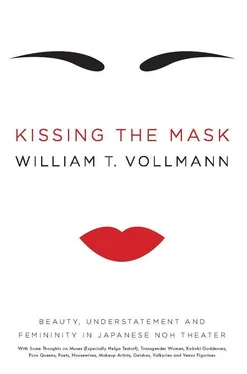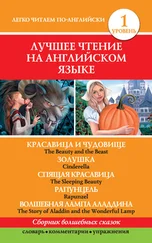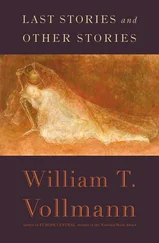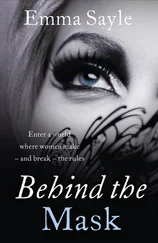WHAT IS NOH?
Opposing itself to the flickering of crowds across the wide white crosswalk-lines, the clatter of a million high heels through subway tunnels crammed with boutiques, the girls who dye their hair red, blonde or brown, the restaurant eels in crystalline tanks, the necktied salarymen rapt in their sadomasochistic comic books, the department stores excitingly bright with new electric goods, the clicking turnstiles, multistorey advertising screens, walkways and throughways, the vending machines so ubiquitous and diverse that they really ought to have their own Audubon field guide, the unending beeping and movement of Shinjuku Station at rush hour, the ball bearing music of pachinko parlors packed with gamblers all in rows, the breathlessly variable, deliciously novel, commercial, showy nowness of urban life, Noh offers us long silences punctuated by a single chant, every instant as perfect as an ideally composed photograph; time stops in order to show us that fact. Outside the Noh theater, everything is present; inside, everything is long past even when it happens. Outside, we find so many things to see and hear that all we can do is gather armloads of them, dropping some as we go; later we’ll remember just a few: a certain alley, face, toy, sign, price. Inside, Noh presents to us a single thing, which lives so slowly that we ought to be able to snatch it up and carry it off; frequently the performers fall inhumanly still; the electricity must have been turned off! The boredom which some people feel at Noh performances is in part self-defensive. If we can’t comprehend this one thing — Mr. Umewaka’s voice, half-spoken, half-sung, with its repeated patterns of cadence dwindling between silences — then what are we really coming away with? And why can’t we comprehend it? In the beginning, it’s easy to explain it away thus: Strangeness takes away all meaning. For example, a single voice moans: Ohh! and at intervals a drum strikes, and fingers flutter on it, then another mask, another ghost appears upon the bridge from elsewhere, and begins to chant, accompanied by perfect silence, with perfect silence between its own words: It’s chanting in strophes. This pale figure invades the stage; then the orange-brocaded woman whom Mr. Umewaka has become slowly follows it. The two make a colloquy, kneeling, facing one another across a glittering wooden distance, and then the chorus begins, the shoulder-drum commences to shake, the fluttering arm strikes it from beneath as the flute screeches with inexpressible unearthliness, the chorus’s voices rising and falling in almost wolflike fashion. What does this “mean”? What is being conveyed? I know the story; the abandoned wife in “Kinuta” is dying of loneliness and resentment; but were it a different, happier story, the music might still seem mournful to me. Mr. Umewaka himself, who first performed at age three, cheerfully acknowledged that his father and grandfather “just taught me the move, not the meaning. Later I tried to realize for myself what it meant.” Geisha dancers tell me much the same. But in time we do begin to know, and even predict a trifle; we’re taught what a certain gesture means, and these almost frozen figures on this nearly empty stage become larger, more complex, less explicable. Isn’t that what “reality” is? I love to rush through Tokyo and I could spend hours adoring a Noh mask. Could Noh someday teach me to be equally exalted in contemplating an oval of white paper? Noh is contemplation. In the bygone centuries of its origin, Noh was the expression of sacred teachings; in the case of such spectacles as “Okina,” which I’ll describe later on, it’s not inaccurate to speak of Noh rites .
“Is Noh secular or religious?” I once asked Mr. Umewaka.
“Of course it is closely connected to religious practice,” he replied, “but this has now become very difficult for the audience to understand. So we remove that element” — and I was shocked to hear him say that he was prepared to remove anything. “We emphasize the theatrical. In the past we invoked the blessings of Buddha. Now we strive to be actors.”
Indeed, to anyone lucky enough to attend a performance, Noh is a theater of upraised golden fans, shaken rattles, stone-faced, howling drummers, positional choreography (mark each performer’s homing-spot on stage, and from this alone you’ll know whether or not he’s the protagonist), of mummy-faced demons in gorgeous kimonos, long silences, ceremoniousness. The noises of the drums, wooden and musical at the same time, mark time’s spending of life and story as Mr. Umewaka raises his golden fan; the flute sounds; he slowly advances, then stamps, turns sideways, still more slowly traversing the stage, he and these other men expressing what at first seems to be the strictest, most severe stonefaced rigidity. Zeami, the fourteenth-century actor, composer and theoretician who with his father Kanami should be credited for much of Noh’s present day form, states in the introduction to one of his secret treatises that “all the exercises must be severely and strictly done: there must be no self-assertion.” It is precisely this which gives each performance what one observer labels “a religious and sober atmosphere of almost suffocating intensity, while the subtle and mysterious expression of the No mask reveals an extreme repression of joy and sorrow.” After silence, one drum begins to beat again; then the tempo increases, the audience reverently murmuring and pointing out this or that subtlety to one another. The drummers chant: “Yo — ho, yyyyyo!” and their percussive representation of emotion and time grows ever more rapid, in time with the swirling of Mr. Umewaka’s gilded fan, all sounds hollow and resonant, like life itself: significant, yet soon to be over. That fan’s movements are as carefully conventionalized as each actor’s place on stage. In Noh, as you might have realized by now, nearly everything is fixed, right down to the performers’ order of entrances and exits: “There must be no self-assertion.” When I asked Mr. Umewaka how it would be if I watched a Noh performance by two different masters, he insisted: “Well, they might do exactly the same thing but what the audience feels would be completely different.” So it is with the fan. Held to the actor’s temple, a fan can be a pillow; held lower, it might be a sake glass. At the end of “Yoro-boshi,” the waki , the foil who plays Shuntoku-maru’s father, opens his fan just before commencing to slowly glide after Shuntoku-maru on that long, pine-tree’d stage-bridge back to “reality’s” curtain. This gesture expresses joy in the reconciliation of father and son. The widening fan emerging from the waki ’s heart, rising up and out, this gesture must express joy; it always expresses joy. In “Yoro,” which tells the tale of a magic spring, Mr. Umewaka manipulates the fan in such a way that any informed person will know that he is dipping water. And these various movements, like operatic motifs, can be combined, strung together: On the edge of the stage Mr. Umewaka kneels, gazing down through the fan into something far beyond “reality,” which Noh continually defies anyhow (the chorus can express a single character’s consciousness, and the lead actor may subdivide into different entities at any time). Slowly he rises, walking backward, raising the fan, momentarily covering his face with it; and the sound of the flute is like wind through a mountain gorge, the hollow, tuneful clanking of the shoulder-drum so “jungly” and “Asian,” and just before the chorus begins its deep-voiced chant, “Eeeooooooooo-ooh!” howls the drummer as Mr. Umewaka slowly glides, his fan cutting the air like a knife. This is Noh theater , which especially stands out thanks to its Noh rhythm . Dr. Yokoyama Taro, formerly of the University of Tokyo, writes me that for him the following is paramount: “Unlike most other music/dance performances including jazz improvisation, Noh lacks any predetermined rhythmic concepts… Each Noh dancer (and musician) must be guided by some on-the-spot rhythmic agreement reached on the spot among themselves… Take away this free-flowing feature, try to arrest a Noh number on any constant rhythmic concept, and you will lose its essence.”
Читать дальше












